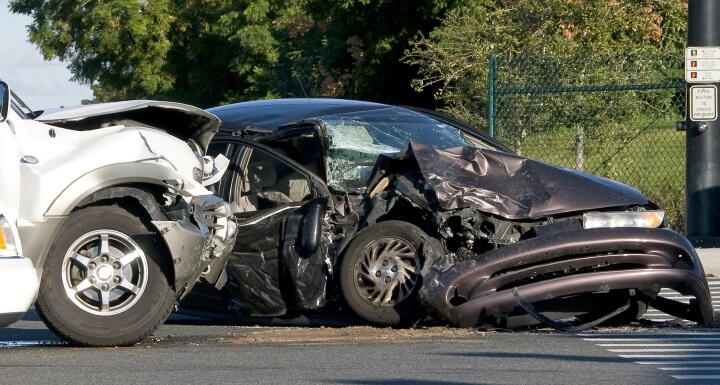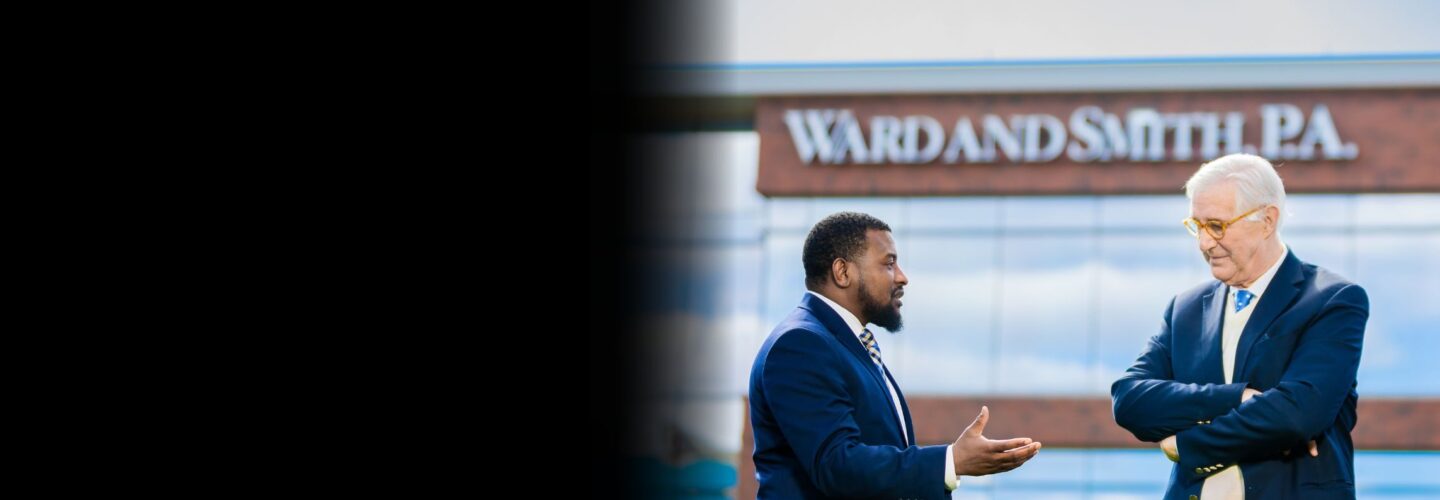Car Accidents and Third-Party Liability

Generally, the thought of a car accident brings to mind a victim and an at-fault driver.
The at-fault driver, however, may not be the only cause of the accident. Instead, the actions and inactions of other third parties, such as government entities, road maintenance crews, and employers, may have also contributed to the accident. When a car accident happens, it is important to consider the potential liability of any such third-parties. Doing so will help ensure that compensation is available for medical bills, lost income, and other damages that an innocent victim may endure.
The Role of “Negligence”
Whether a third party is liable for an accident depends on whether the potentially at-fault third party was “negligent.” Individuals are negligent when they fail to act with reasonable care and their actions cause an injury. A party’s actions or inactions may also be negligent where they fail to comply with a law, regulation, or policy. A negligent party is legally liable for the damages that their negligence causes unless a legal defense applies.
One potential defense in North Carolina is the doctrine of “contributory negligence.” North Carolina is one of the few states that recognizes contributory negligence. Under this doctrine, if an injured party negligently contributed to the accident or their injuries—even in the slightest manner—the injured party’s negligence completely bars them from recovery. However, exceptions to the contributory negligence defense may apply, including the doctrine of “last clear chance” or an at-fault party’s conduct constituting “gross negligence.”
Therefore, to hold a third party liable for a car accident, the injured party must demonstrate that the third party was negligent and that the third party’s negligence was a cause of the accident.
Possible At-Fault Third Parties in a Car Accident
Aside from the at-fault drivers themselves, depending on the facts of each case, there may be numerous other at-fault third parties who are also liable for a car accident:
- Government Entities. Entities responsible for designing or maintaining roads may be liable for creating unsafe driving conditions, including a lack of necessary stop signs or stoplights, overgrown vegetation, inadequate road signs, and a lack of crosswalks.
- Contractors and Construction Teams. Contractors, subcontractors, and construction teams may be responsible for creating unsafe driving conditions, such as negligently designed roadways; negligently designed construction plans, including traffic management plans; improper construction signage; misplaced warning signs; improper use of construction equipment; and negligent construction that creates dangers to motorists.
- Road Maintenance Crews. These crews may be responsible for an accident when their actions or inactions cause the accident, including failure to place proper signage and warnings for drivers and negligently operating maintenance equipment.
- Employers. When employees cause an accident while acting within the course and scope of their employment, their employer may be held liable for the accident. It is important to look into who owns an at-fault driver’s vehicle, the at-fault driver’s employment status, the at-fault driver’s purpose for driving at the time of the wreck, and whether the at-fault driver had the necessary qualifications to operate the vehicle.
- Bars and Restaurants. If a bar or restaurant providing alcohol overserves someone they knew would likely drive and that person causes an accident, the bar or restaurant may be liable.
- Negligent Entrustment. If the owner of a vehicle allows someone else to drive their vehicle knowing that the driver is inexperienced, incompetent, unlicensed, or has a reckless driving history, the owner may be liable for an accident caused by the driver.
- Parents. Under the family purpose doctrine in North Carolina, parents may be held liable for car accidents their children cause.
- Passengers. A passenger may be liable for an accident if, for example, the passenger interfered with the driver’s ability to operate the vehicle or encouraged an unfit driver to operate the vehicle.
- Product Manufacturers. The manufacturer of a vehicle or its parts may be liable for an accident if a product defect in the vehicle itself, such as a manufacturing or design defect, causes an accident.
Lawsuits Against At-Fault Third Parties
Bringing a claim against a third party is a unique and complicated process. An injured party needs an experienced attorney to handle these cases. Depending on the third party involved, an injured party may need to bring claims within two different judicial systems—for example, state or federal court and the Industrial Commission. Depending on who the at-fault parties are in an accident, different laws and regulations may guide the standards of care or negligence standards involved. These claims may also require unique discovery tools, such as FOIA requests.
If there are multiple responsible parties in a car accident, for example, a negligent driver and a negligent third party, North Carolina follows the rule of joint and several liability. Under joint and several liability, every party that was negligent is responsible for the full amount of the injured party’s damages.
Resolving these claims and maximizing the injured party’s recovery is a complicated process. The injured party must use a proper strategy in the sequence of resolution when there is more than one negligent party. For example, improper paperwork used in early settlements can negatively impact, and even bar, an injured party’s recovery against potentially larger recoveries from other third parties who contributed to the accident.
An Injured Party’s Damages
Once the injured party proves that a third party was negligent and such negligence caused the car accident, the injured party’s damages must be evaluated. A court awards damages to make an injured person “whole” under the law. Although no amount of money could ever compensate someone for a serious, permanent injury or death, a monetary payment is the only option our civil legal system provides. A negligent party or their insurance company, if applicable, is responsible for paying these damages to the injured party.
With personal injuries, there are multiple types of damages that may apply. “Economic” damages include past and present medical bills, as well as any other future medical costs. An injured party may also be entitled to lost wages or a claim for diminished future earning capacity due to ongoing health problems arising from their injuries.
“Noneconomic” damages are meant to compensate the injured party for pain and suffering, scarring or disfigurement, loss of use of a body part, or the permanency associated with any continuing injuries. It is up to the parties (or their insurance companies, if applicable), a judge, or a jury to determine a reasonable amount of compensation for these damages based on the specific facts of a case.
Conclusion
Many factors can contribute to a car accident, including the actions or inactions of a third party, who was not even in the at-fault driver’s vehicle. When an at-fault driver and another party, such as a government contractor or the at-fault driver’s employer, cause an accident and someone is injured, both of the negligent parties are legally liable for the damages caused. These cases are very complex. It is imperative to involve an experienced, committed attorney to ensure the protection of an injured party’s rights and to provide skilled guidance during a challenging legal process.
—
© 2022 Ward and Smith, P.A. For further information regarding the issues described above, please contact .
This article is not intended to give, and should not be relied upon for, legal advice in any particular circumstance or fact situation. No action should be taken in reliance upon the information contained in this article without obtaining the advice of an attorney.
We are your established legal network with offices in Asheville, Greenville, New Bern, Raleigh, and Wilmington, NC.
Featured News
View All
